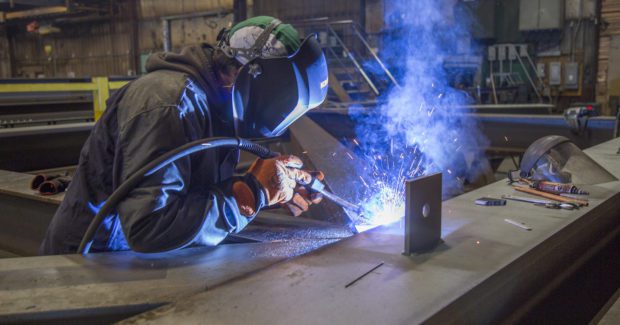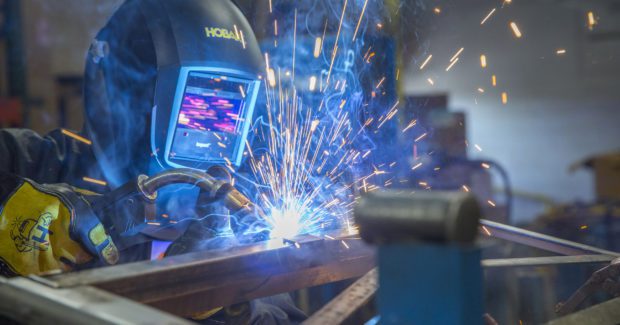The Importance of Proper Welding Operator Training
To gain more business in the face of a skilled labor shortage, fabrication shops need welding operators that are familiar with a wider variety of welding processes and materials and can take on new jobs to set their shops apart. Proper operator training plays a key role in reaching these goals.
Posted: August 25, 2016
Welding operators today must be more versatile, efficient and adaptable than ever. Facing the current skilled labor shortage, fabrication shops need employees who can maintain high levels of productivity and quality to help them stay competitive — making more with less. Also, many fabricators are expanding their capabilities to gain more business. This means welding operators must now be familiar with a wider variety of welding processes and materials, and be able to take on new jobs that will set their shops apart. Proper operator training plays a key role in reaching these goals and in establishing a viable welding workforce in metal fabrication.
1. SAFETY
The best welder is a safe one. Welding operators should be trained, first and foremost, on the proper use of safety gear.
- Eye and face protection: Operators should always wear safety glasses and know to use the appropriate shade of helmet lens for the level of welding being performed. Higher amperage welding generates a hotter and brighter arc that requires an increasingly darker lens. The American Welding Society (AWS; Miami, FL) provides minimum protective shade recommendations for all welding processes and arc current (amps) as reference.
- Proper clothing and shoes: Operators should always wear flame-resistant, natural fibers such as denim and leather, avoiding synthetic materials that can easily melt when struck by spatter. Pants with cuffs or shirts with pockets should be avoided; they can catch sparks and lead to injuries. Thick leather gloves offer good protection against heat, sparks and spatter. High-top leather shoes and work boots offer the best protection.
- Adequate ventilation: Operators should be trained to follow OSHA’s recommendations for weld fume management and to check safety data sheets (SDS) for each material and filler metals being used. They should also be trained as to the proper use of a respirator when required and to avoid positioning their face in the weld plume.
2. INTERPRETING THE WELD POOL
Welding operators should be trained on “reading” the weld pool for the process at hand. Since oxy-fuel welding is one of the slower processes and the heat generated during the process is controllable with the flame, it’s often a good starting point to teach new operators what the weld pool looks like. Once an operator has learned to recognize and control the weld pool, it is easier to move on to learning the MIG process, for instance.
It’s important to note the weld pool in different processes may look different. For example, during flux-cored welding, the slag floats toward the top of the weld bead, requiring the welding operator to use the force of the arc and the correct gun angle to keep the slag away from the leading edge of the puddle. On the other hand, aluminum doesn’t change colors but only gets “wet looking,” which can make it more difficult for welding operators to determine when a puddle has formed and how large it is. In the end, welding requires hand-eye coordination, so the operator must see what’s happening and react accordingly. For that reason, there is no substitute for practice.
3. UNDERSTANDING SHIELDING GAS AND WELDING PARAMETERS
Training operators to understand how shielding gas and welding parameters impact welding performance and weld quality is important. For example, carbon dioxide provides broad, deep joint penetration and is good for welding thicker materials, but it tends to produce more spatter and can have a less stable arc that operators may have to learn to accommodate for. Conversely, shielding gas mixtures with higher argon levels produce a smoother arc and reduce spatter, but they also reduce joint penetration and increase the tensile and yield strength of the weld. This can make the weld less ductile and increase the possibility of cracking. Welding operators should be trained on the effects of shielding gas type and flow rate, and learn how to respond accordingly to manage the arc and produce a quality weld.
4. FOLLOWING WELDING PROCEDURES
In the same way that baking a cake requires a baker to follow the recipe, welding requires the operator to follow the correct process procedures. Operators should learn to always follow the designated welding parameters for the job. For instance, if a welding procedure calls for a given amperage and voltage, but the operator uses a lower amperage and voltage, he or she may not be getting the penetration the joint needs. This can result in not only slower welding, but also a potentially weak weld. On the other hand, if an operator welds with too high of an amperage and voltage than the procedure calls for, there is the risk of burn though or excessive heat input, which could cause distortion.
5. FILLER METAL SELECTION AND CLASSIFICATION
Training welding operators to know which filler metals provide the appropriate mechanical and chemical properties for a job can minimize the risk of using the wrong filler metal, which can lead to costly rework. There are seven main factors to consider when selecting a filler metal, and welding operators should learn the importance of each:
- The base material to be welded
- The welding position
- Regulatory specifications and codes
- Design requirements
- Shielding gas
- Post-weld heat treatment
- Welding equipment
Likewise, it’s important to train operators to understand American Welding Society (AWS) classifications for filler metals. Each classification has an alphanumeric formula that stands for its specific mechanical and chemical properties — and also provides critical information about how a particular filler metal should be used. For example, a flux-cored wire with the AWS classification E71T-1C H8 reveals the following:
- E = electrode
- 7 = the wire’s tensile strength in pounds per square inch (psi) is 70,000 psi
- 1 = the wire’s all-position welding capabilities; (“2” would indicate flat/horizontal welding position capabilities)
- T = tubular wire; (“C” indicates metal-cored wire)
- 1 = the wire’s usability, including that the wire has a rutile slag system and operates on the electrode positive (DCEP)
- C = the wire requires a CO2 shielding gas (“M” would indicate the wire requires an argon/CO2 shielding gas mixture)
- H8 = the diffusible hydrogen in the weld metal is less than 8 ml of hydrogen per 100 g of deposited weld metal
Training welding operators to understand these classifications will help them better understand the characteristics and capabilities of the filler metal being used. And, as with any part of training, the more knowledge that can be imparted on to employees, the greater skill set they will achieve — and in this case, the better and more versatile welding operators they can become.

















